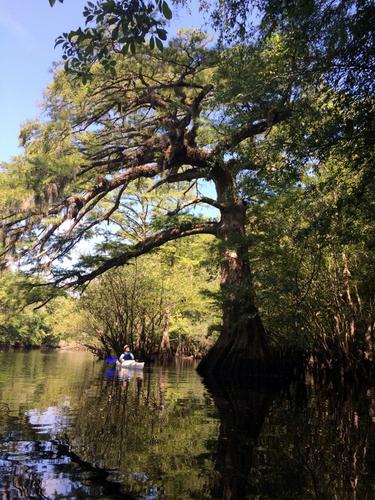The Black River is a free-flowing Coastal Plain river bordered by a rural landscape of forests and farmlands. The river corridor presents a ribbon of dense swamp forests, dark waters, and white sandbars. The Black River is named for its black water, darkly stained and resembling a tea or coffee color, which results from the tannins leached from plant material in the surrounding swamps. The channel pattern of the Black River alternates from large, open "lake-like" areas to narrow channels. The bottom of the river is a very clean sand. At lower water levels, there are numerous sand bars.
The river and adjacent lands provide a corridor of high quality habitat for a variety of plants and animals including some rare species such as American chaffseed and the swallow-tailed kite, and some very old species such as the bald cypress trees growing near The Nature Conservancy’s Black River tract east of Andrews.
A 75-mile segment of the Black River was designated a State Scenic River in June 2001. This Scenic River designation extends from State Road 40 Bridge (June Burn Road) in Clarendon County, through Williamsburg County, and ends at Pea House Landing in Georgetown County.
Navigation note: Some sections of the Black River upstream of Pea House Landing are difficult to navigate when river-water-level conditions are low. When the USGS gage height at Kingstree is reading 2-feet or lower, several sections of the river channel become shallow and boaters have to walk rather than float those river sections.
Adjacent Waterways: on-stream, Pocotaligo River; downstream, Pee Dee River and Winyah Bay (Coastal).
Featured trips for this waterway showing difficulty (circles) and current runnability status (squares). .

